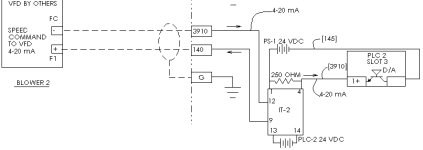signal isolator
- Thread starter GEOFRA
- Start date
Similar Topics
I'm needing to get a Signal Isolator / Splitter but needing quickly so my normal 1 Channel Input and 2 Channel Output version I would use is not...
I am not sure why this is requested, but it was asked.
Currently I have one PLC , with one output to a relay, turning on a field equipment (just...
Hi,
I am working on automating an industrial fabric shrinkage tester to replace its outdated electronics with a PLC.
To get the tank's water level...
Hello,
I have a compact Logix plc and I have been task with configuring alarms into our SCADA when an Analog signal stops moving.
The analog...
Hi
I have an old panel builder 32 that I’m replacing for a factory talk me hmi . In the plc for the old panel builder there is a coms bit for the...





